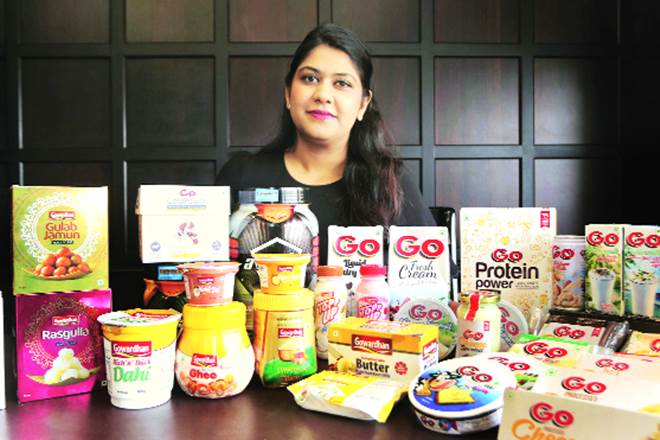Parag Milk Foods’ Gowardhan milk, its oldest product, is seeing a gradual decline in revenue. The company has now shifted its focus on products such as cheese, whey protein, beverages and sweets. The company’s Senior VP Akshali Shah talks to Sonam Saini about the challenges in venturing into newer segments, the potential in premium milk, and tapping the North and East markets. Edited excerpts:
How difficult has it been to influence consumers in the whey protein market with Avvatar, considering international brands dominate the shelves?
Though there are many foreign players, the headroom for growth is immense as there is no major Indian player in this segment. Avvatar has become a Rs 25 crore brand now. We intend to not only have the health and nutrition business contribute 7% to our portfolio by FY 2021, but, more importantly, also drive profitability for both cheese and whey products.
Consumers usually consult their gym trainers and nutritionists when planning to buy protein products. Therefore, we are educating and promoting our product among gym trainers and owners who are key influencers in this category. We are reaching out to nutrition supplements stores, pharmacies, modern retail stores and e-commerce portals.
Parag entered the ready-to-eat sweets market only in January this year. What’s your strategy in this market which has established players such as Haldiram’s, Gits Food and Bikaji?
The Indian sweets market size is around Rs 7,000-8,000 crore; and there is room for other players. This initiative is a forward integration for us, as the sweets are made out of Gowardhan Ghee, which is the flagship brand of the company. Besides, we have a good distribution network.
We are targeting West, North and South markets for gulab jamun, and the North and East markets for rasgullas. We will also launch other sweets variants in six months.
How different is the market for your premium Pride of Cows milk brand from the Gowardhan brand, which has a mass appeal?
The source of milk is completely different for each of them. Gowardhan milk, which is standardised, comes from our network of five lakh farmers. Pride of Cows, the premium milk brand, is based on the farm-to-home concept. Gowardhan milk is available in dairies, but Pride of Cows has a subscription model; it is only by invitation. Maharashtra is the strongest market for both these products.
We expanded Pride of Cows to Delhi and also launched in Singapore. We are looking at expanding it to other countries in Asia. Pride of Cows caters to 45,000 households across four cities including Mumbai, Pune, Delhi and Surat; and contributes 4% to the overall revenue.
Your revenue from the liquid milk category has been declining. Isn’t this a cause for concern?
We are not much focussed on the liquid milk category. Our growth in this segment is much lower as compared to other consumer products; therefore, as a part of the pie, it is decreasing gradually. Our business focus is on value-added products which contribute 80% to our revenue, whereas the liquid milk category contributes 20%.
Parag Milk Foods is a Maharashtra-based company, slowly venturing into other geographies. We haven’t established our presence completely in the North and East markets yet, like we have in Mumbai, Ahmedabad and Pune. The recent acquisition of a Danone plant in North India is aimed at going deeper.
How much do your other sub-brands like Topp Up and Slurp contribute to revenue?
The flavoured beverage market is growing tremendously, especially in the summer. It is a highly unorganised market; it’s all about availability. This is a game of distribution and that is how we are able to cater to consumers with three lakh outlets across the country. Currently, the contribution of these sub-brands is small, since we launched these products only in 2014-15. For Topp Up, North India is the strongest market.
How big is the food service industry for Parag Milk Foods?
Cheese has the highest consumption in the food service industry—comprising 50% of the business. It’s a pattern in India: 60-70% of the cheese consumption happens out of home. The overall hotel-restaurant-café business contributes 12% to our overall revenue.
What does your international footprint look like?
We supply to more than 31 countries across the world, with ghee and beverages (buttermilk, lassi and Topp Up) being the fastest growing products. The US and Singapore are the biggest markets, followed by the Middle East. The export business contributes 3% to overall revenues.


